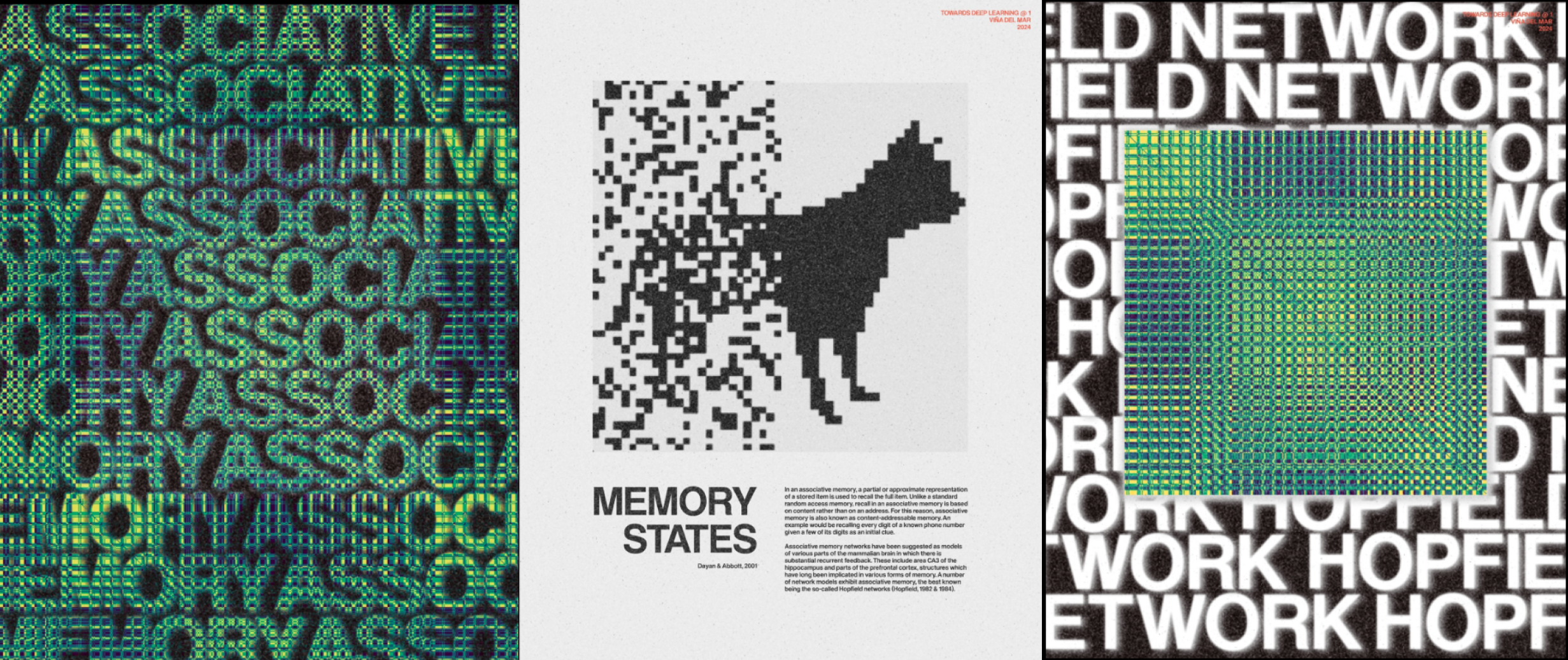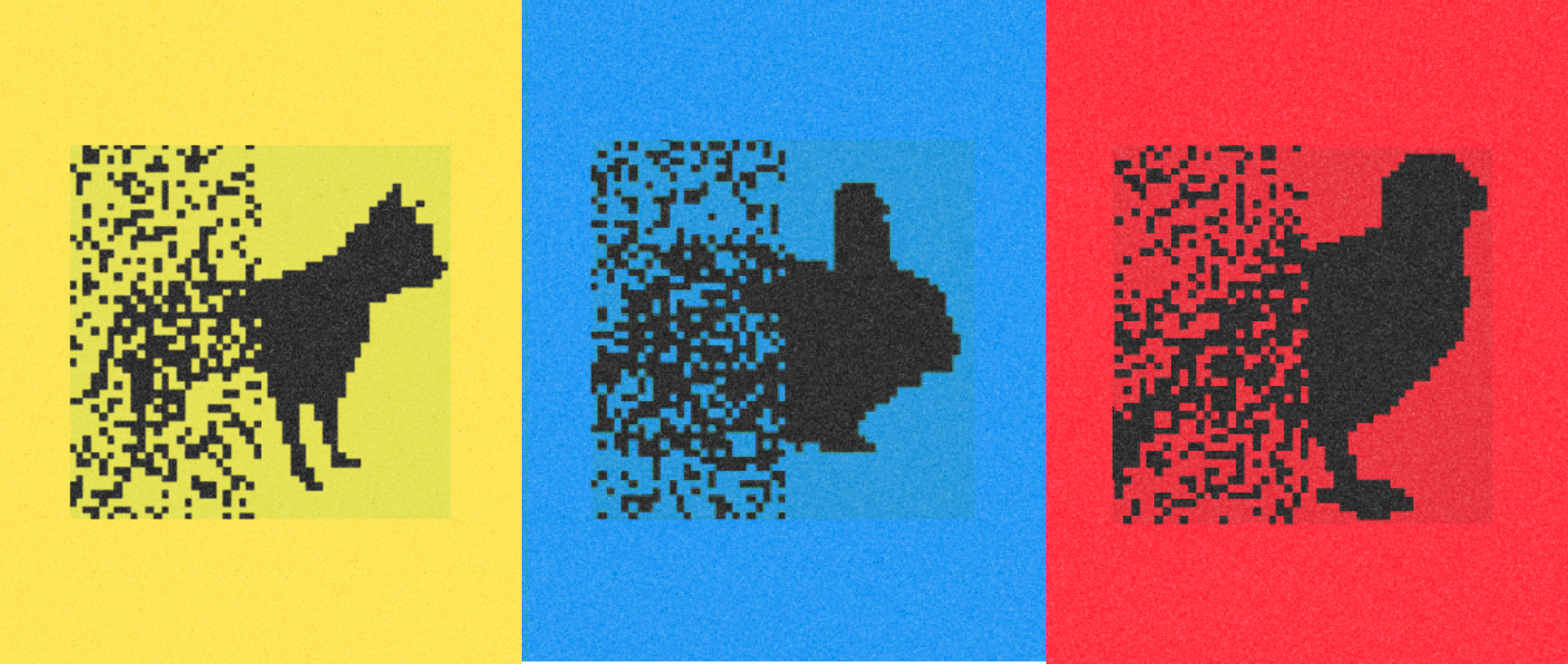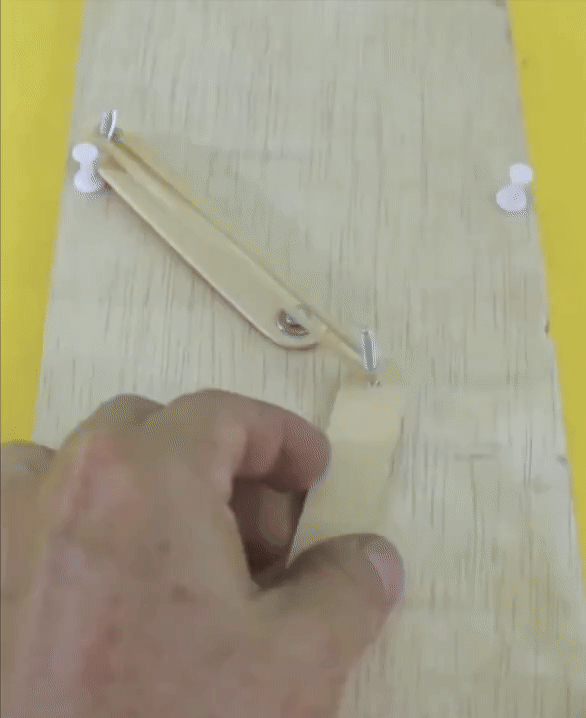I’ve been inspired by learning about this model of memory in a neural network. I'd never thought about it this way before so I tried to put the concepts together.
In the image of the cat below each neuron is represented by a pixel. We can think of the pattern as spread across all the neurons in the network - the entire image. But the neurons are not isolated, each one communicates with all the others, creating an underlying pattern of these connections (image 3).

But how are they connected?
This reminds me of when a teacher separated all our groups of friends in a classroom because we talked too much. When all students were in the new random seats, there was a tension, as if a spring between people was stretched. But eventually, we would slowly start to swap seats so we can regroup, until everyone was happy again.
Suddenly the global order of the classroom was restored, and only through the student's individual connections and preferences for whom to sit with!
In a similar way, we can store different patterns in this network by finding the right connections between different neurons. So when you have a disordered pattern that increases the tension, a simple nudge towards a recorded one causes all connected neurons to rearrange their values, so the whole network "falls" to a stable point where all the neurons are happy and that pattern is recovered.
Falling into a stable state
If you provide a noisy cat it will recover the normal cat, and the same for the rabbit and the bird. We can recover a pattern from a partial image, and it is the individual communication between neurons that causes the system to gradually recover its form towards a preferred state where tension is minimal.
This is a beautiful concept that relates to how physics describes systems: minimization of energy.In this model, states are recovered through potential energy minimization, and the property of this network system to recover the learned states is what's called associative memory.

Universal behavior
When we have more than one memory stored, I imagined that the system as a whole would work like a spring that has more than one preferred state, and it exists!
that has more than one preferred state, and it exists!
If you position this mechanism right in the middle, depending on a slight initial inclination, it will fall into one state or the other, because there is a structure that has been built with these two states encoded.
From what I’ve learned, the capacity to recover a state from a partial one (associative memory) is a fundamental concept in the development of modern neural networks.
Although there's limitations and I know there’s newer methods to recover states that don't rely on energy minimization, I wonder if this principle can be generalized to any system composed of individual elements and these kind of connections between them.
In that sense, could we, to some extent, define a memory behavior in all sorts of systems with more complex situations where the system as a whole naturally falls towards a learned or stable state?
I wonder if this has been used to model collective behaviors of groups of people, or an ecosystem, or maybe economics. Could there be a specific point in time where a slight nudge leads towards a decision? I don't know yet.
juntar párrafos
EDIT:
-> this leads to Predictive Processing! according to this, the brain is a predictive model of the world. a thread comment created this open door